|
Books Should Be Free Loyal Books Free Public Domain Audiobooks & eBook Downloads |
|
|
Books Should Be Free Loyal Books Free Public Domain Audiobooks & eBook Downloads |
|
Science |
|---|
|
Book type:
Sort by:
View by:
|
By: Carl Lumholtz (1851-1922) | |
|---|---|
 Among Cannibals
Among Cannibals
From 1880-1883, the author undertook an academic expedition to Australia, with the purpose of recording zoological phenomena. While there, he developed an interest in the indigenous people and, unlike contemporary studies, did not restrict himself to appearance and outward behavior, but rather looked at the social, economic and anthropological. - Summary by Lynne Thompson | |
By: Carl von Clausewitz (1780-1831) | |
|---|---|
 On War
On War
A classic work on military strategy by a veteran of the Napoleonic Wars. The author's style is dialectical: he makes two strong but opposing statements and then draws them together to describe many facets of war. Free of technical jargon, and suitable for modern readers. This audiobook is based on a 1909 English translation. | |
By: Carter Woodson (1875-1950) | |
|---|---|
 Century of Negro Migration
Century of Negro Migration
Dr. Woodson describes the internal migration of African Americans within the United States, including the Northern Migration and the draw of California. Cultural and sociological observations are made as well as a study of principal economic factors in this migration. Summary by KevinS. | |
By: Cesare Lombroso (1835-1909) | |
|---|---|
 Crime, Its Causes and Remedies
Crime, Its Causes and Remedies
Published as the third volume in the Modern Criminal Science Series, Cesare Lombroso, renowned Italian criminologist, collected a wealth of information regarding the incidence, classification, and causes of crime. Crime calendars, the geography of crime, unusual events and circumstances leading to more frequent crime, political motivations and associations of criminal enterprise and an assessment of the real value and effectiveness of prisons and reform programs are all included in this three part volume. - Summary by Leon Harvey | |
 Man of Genius
Man of Genius
Famous criminologist, anthropologist, and psychiatrist, Dr Lombroso, investigated the memetic anecdotal belief that genius is associated with degenerative symptoms, or may even be a version of insanity, and presented his findings as a fascinating and controversial theory that the creative and imaginative celebrities throughout history have also displayed what he termed as "atavistic" symptoms, or defects resembling what is commonly seen in the unwell. Citations of evidence are drawn from a rich variety... | |
By: Charles A. Higgins | |
|---|---|
 Titan Of Chasms: The Grand Canyon Of Arizona
Titan Of Chasms: The Grand Canyon Of Arizona
This is a 1906 collection of three essays by men famously associated with The Grand Canyon: Charles A. Higgins, John Wesley Powell, and Charles F. Lummis. - Summary by david wales | |
By: Charles A. Ward (1846-1908) | |
|---|---|
 Oracles of Nostradamus
Oracles of Nostradamus
Charles A. Ward was considered one of the most knowledgeable in his studies of the prophecies of Nostradamus. Ward viewed the prophecies of Nostradamus as predictions that only make sense in hindsight, rather than a tool for predicting future events. This work includes Ward's theories regarding the methods of prediction and his theoretical belief that the predictions were sequential. Ward details only a few of the actual predictions of Nostradamus in his interpretations but attempts to shed light on his theoretical orientation in hopes of making them easier to understand for the reader. - Summary by CJ Plogue | |
By: Charles Alexander Eastman (1858-1939) | |
|---|---|
 Indian To-day
Indian To-day
Based in part upon the author's own observations and personal knowledge, it was the aim of the book to set forth the status and outlook of the North American Indian. He addressed issues such as Indian schools, health, government policy and agencies, and citizenship in this book. In connection with his writings, Eastman was in steady demand as a lecturer and public speaker with the purpose of interpreting his race to the present age. | |
By: Charles Babbage (1791-1871) | |
|---|---|
 Passages from the Life of a Philosopher
Passages from the Life of a Philosopher
Some men write their lives to save themselves from ennui, careless of the amount they inflict on their readers. Others write their personal history, lest some kind friend should survive them, and, in showing off his own talent, unwittingly show them up. Others, again, write their own life from a different motive—from fear that the vampires of literature might make it their prey. I have frequently had applications to write my life, both from my countrymen and from foreigners. Some caterers for the public offered to pay me for it... | |
By: Charles C. Burleigh (1810-1878) | |
|---|---|
 Thoughts on the Death Penalty
Thoughts on the Death Penalty
This 1845 publication, written by a prominent reformer of the day, argues against capital punishment from several perspectives, including historical, philosophical and biblical arguments. It is broken into 3 chapters: Expediency, Justice, and Sacred Scriptures . Burleigh frequently references and argues against George B. Cheever, a prominent death penalty advocate of the time."If it shall thus be the means of helping on in a humble way the progress of that humane reform whose principles it advocates;... | |
By: Charles Darwin (1809-1882) | |
|---|---|
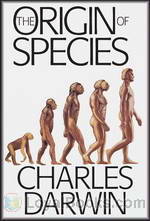 On the Origin of Species by Means of Natural Selection
On the Origin of Species by Means of Natural Selection
Considered to be one of the books that changed the world and how we view ourselves, On The Origin of Species by Charles Darwin was met with incredulous horror when it was first published in 1859. The revolutionary, almost blasphemous ideas it described were seen as antithetical to the existing ideas of Creation contained in the Bible and other religious texts. It was mocked, reviled and the author was personally subjected to vicious persecution by the establishment and theologians. In the years that followed its publication, the book became the subject of furious intellectual and social debate... | |
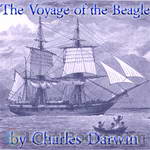 The Voyage of the Beagle
The Voyage of the Beagle
The book, also known as Darwin’s Journal of Researches, is a vivid and exciting travel memoir as well as a detailed scientific field journal covering biology, geology, and anthropology that demonstrates Darwin’s keen powers of observation, written at a time when Western Europeans were still discovering and exploring much of the rest of the world. Although Darwin revisited some areas during the expedition, for clarity the chapters of the book are ordered by reference to places and locations rather than chronologically. With hindsight, ideas which Darwin would later develop into his theory of evolution by natural selection are hinted at in his notes and in the book . | |
 The Autobiography of Charles Darwin
The Autobiography of Charles Darwin
The Autobiography of Charles Darwin is the autobiography of the British naturalist Charles Darwin which was published in 1887, five years after his death. Darwin wrote the book, which he entitled Recollections of the Development of my Mind and Character, for his family. He states that he started writing it on about May 28, 1876 and had finished it by August 3. The book was edited by Charles Darwin’s son Francis Darwin, who removed several passages about Darwin’s critical views of God and Christianity... | |
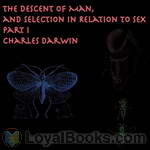 The Descent of Man and Selection in Relation to Sex
The Descent of Man and Selection in Relation to Sex
PART I. THE DESCENT OR ORIGIN OF MAN. Part 1 of 3 of book on evolutionary theory by English naturalist Charles Darwin, first published in 1871. It was Darwin's second great book on evolutionary theory, following his 1859 work, On The Origin of Species. In The Descent of Man, Darwin applies evolutionary theory to human evolution, and details his theory of sexual selection. The book discusses many related issues, including evolutionary psychology, evolutionary ethics, differences between human races, differences between sexes, the superiority of men to women, and the relevance of the evolutionary theory to society... | |
 Formation of Vegetable Moulds through the Action of Worms with Observations on their Habits
Formation of Vegetable Moulds through the Action of Worms with Observations on their Habits
Charles Darwin LL.B F.R.S was the discoverer of evolution and argued the role of "natural selection" in directing the evolution of species. Darwin also had an interest in the formation of soils (moulds) that began relatively early in his life, with a paper "On the Formation of Vegetable Moulds" delivered to the Geological Society of London in 1937. Darwin's last book, The Formation of Vegetable Moulds through the Action of Worms with Observations on their Habits, was completed in 1881. | |
By: Charles George Harper (1863-1943) | |
|---|---|
 Revolted Woman
Revolted Woman
One man's opinion of woman in 1894. Charles Harper believes in the superiority of the male sex and the subordination of the female. He paints an entire gender with the same brush. He believes all women to be identical in mind (illogical) and body (knock-kneed) and vastly inferior to the male. He presents 'facts' to support his opinions: "Woman's Mission is Submission" "for woman has ever been the immoral sex" "how truly like nature their tongues say 'No,' when their hearts throb 'Yes, yes!'" "She... | |
By: Charles Godfrey Leland (1824-1903) (1824-1903) | |
|---|---|
 The Mystic Will
The Mystic Will
This book presents a method of developing and strengthening the faculties of the mind, through the awakened will, by a simple, scientific process possible to any person of ordinary intelligence | |
By: Charles Holder (1851-1915) | |
|---|---|
 Half Hours With the Lower Animals
Half Hours With the Lower Animals
This book is devoted to the study of invertebrate animals. While most people associate the word "animal" with fish, amphibians, reptiles, birds, and mammals, 90% of the animal species on earth are invertebrates, i.e., they have no backbone. Protozoans and invertebrate animals are found world-wide, from the bottom of the oceans to the the rain forests, ice caves, and our own back yards. Many invertebrates still reside in the oceans, while others dwell in our houses, back yards and gardens, in ponds and streams, and on the menus in seafood restaurants... | |
By: Charles Hoy Fort | |
|---|---|
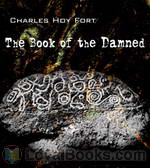 The Book of the Damned
The Book of the Damned
The Book of the Damned was the first published nonfiction work of the author Charles Fort (first edition 1919). Dealing with various types of anomalous phenomena including UFOs, strange falls of both organic and inorganic materials from the sky, odd weather patterns, the possible existence of creatures generally held to be mythological, disappearances of people under strange circumstances, and many other phenomena, the book is historically considered to be the first written in the specific field of anomalistics. – | |
By: Charles Kingsley (1819-1875) | |
|---|---|
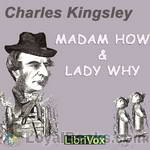 Madam How and Lady Why
Madam How and Lady Why
Did you ever wish you knew how to explain natural phenomena such as earthquakes and volcanoes to your children? Search no more, this book has all the answers (at least all the ones that were known in 1869) and gives them in a pedagogical way. Listed on the Ambleside homeschooling list. | |
By: Charles L. Fontenay | |
|---|---|
 Rebels of the Red Planet
Rebels of the Red Planet
Dark Kensington had been dead for twenty-five years. It was a fact; everyone knew it. Then suddenly he reappeared, youthful, brilliant, ready to take over the Phoenix, the rebel group that worked to overthrow the tyranny that gripped the settlers on Mars.The Phoenix had been destroyed not once, not twice, but three times! But this time the resurrected Dark had new plans, plans which involved dangerous experiments in mutation and psionics.And now the rebels realized they were in double jeopardy.... | |
By: Charles McRae | |
|---|---|
 Fathers of Biology
Fathers of Biology
An account given of the lives of five great naturalists (Hippocrates, Aristotle, Galen, Vesalius and Harvey) will not be found devoid of interest. The work of each one of them marked a definite advance in the science of Biology. There is often among students of anatomy and physiology a tendency to imagine that the facts with which they are now being made familiar have all been established by recent observation and experiment. But even the slight knowledge of the history of Biology, which may be obtained from a perusal of this little book, will show that, so far from such being the case, this branch of science is of venerable antiquity... | |
By: Charles Morris (1833-1922) | |
|---|---|
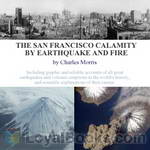 The San Francisco Calamity by Earthquake and Fire
The San Francisco Calamity by Earthquake and Fire
The first half of this book describes the devastating earthquake that hit San Francisco in 1906, and the subsequent destruction caused by fire. Various eyewitnesses and victims give their account on the tragedy. In the second half, a number of different other earthquakes and volcanic eruptions are retold, like the eruption of the Vesuvius that destroyed Pompeij or the explosion of the Krakatoa, together with scientific explanations for the causes of earthquakes and the eruption of volcanos. | |
 Chronicles of America Volume 09 - Colonial Folkways
Chronicles of America Volume 09 - Colonial Folkways
This work according to the subtitle is "a chronicle of American life in the reign of the Georges." It describes land, locales, houses, habits, diversions, learning, religion, labor, and travel. | |
By: Charles Nordmann (1881-1940) | |
|---|---|
 Einstein and the Universe
Einstein and the Universe
"M. Nordmann has presented Einstein’s principle in words which lift the average reader over many of the difficulties he must encounter in trying to take it in. Remembering Goethe’s maxim that he who would accomplish anything must limit himself, he has not aimed at covering the full field to which Einstein’s teaching is directed. But he succeeds in making many abstruse things intelligible to the layman." - Summary by from the Preface by Viscount Haldane Giving significant credit to Henri... | |
By: Charles R. Gibson (1870-1931) | |
|---|---|
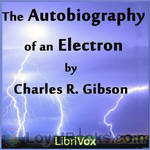 The Autobiography of an Electron
The Autobiography of an Electron
"While many scientific men now understand our place in the universe, we electrons are anxious that every person should know the very important part which we play in the workaday world. It was for this reason that my fellow-electrons urged me to write my own biography. I am pleased to say that my relationship with the scribe who has put down my story in the following pages has been of the most friendly description. I have allowed him to place what he calls "The Scribe's Note" at the beginning of each chapter, but it will be understood clearly that these are merely convenient embellishments, and that I am responsible for the story of my own experiences." (Introduction adapted from the text) | |
 Romance of Modern Photography
Romance of Modern Photography
It is not the author's purpose in the present volume to give any instruction in the practice of photography. There are many works dealing with the practical side of the subject. His object is to tell the romantic story of the discovery of this wonderful art, and the steps by which its range has been extended until it can achieve results which only a few years ago would have been thought impossible. A glance at the list of chapters will show what a wide field photography now covers, and what service it renders to man, both in his everyday life and in his most subtle scientific researches. - Summary by The Author | |
 Romance of Modern Electricity
Romance of Modern Electricity
From the series, The Library of Romance, this book introduces the reader to the modern concepts of electricity. The author discusses how man came to know about electricity, and how it powers the world of 1910. | |
By: Charles Sternberg (1850-1943) | |
|---|---|
 Life of a Fossil Hunter
Life of a Fossil Hunter
Charles Sternberg was an American fossil collector and paleontologist. He was active in both fields from 1876 to 1928, and collected fossils for private collectors as well as for international museums. This book is part travelogue, part paleontology, and part historical narrative of life on the open prairie. In it, Sternberg tells of his early interest in fossil hunting as a boy, and scientific expeditions from his first in 1876 to one for the Munich Museum in 1901. - Summary by Ava | |
By: Charles W. Diffin (1884-1966) | |
|---|---|
 Two Thousand Miles Below
Two Thousand Miles Below
A science fiction novel that was originally produced in four parts in the publication: Astounding Stories in June, September, November 1932, January 1933. The main character is Dean Rawson, who plans on discovering a way of mining power from a dead volcano, but ends up discovering more than he bargained for. | |
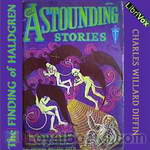 The Finding of Haldgren
The Finding of Haldgren
Chet Ballard answers the pinpoint of light that from the craggy desolation of the moon stabs out man's old call for help. | |
By: Clarence Darrow (1857-1938) | |
|---|---|
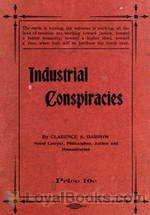 Industrial Conspiracies
Industrial Conspiracies
| |
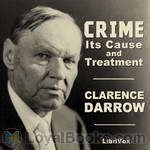 Crime: Its Cause and Treatment
Crime: Its Cause and Treatment
Clarence Darrow was an American lawyer. He remains notable for his wit and agnosticism, which marked him as one of the most famous American lawyers and civil libertarians.In this book, Darrow expands on his lifelong contention that psychological, physical, and environmental influences—not a conscious choice between right and wrong—control human behavior. To my ears (the reader's), the author has a rather simplistic behaviourist view of human behaviour, but he argues his position with wonderful clarity... | |
By: Clifford D. Simak (1904-1988) | |
|---|---|
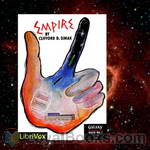 Empire
Empire
In a future time, the solar system is powered by one energy source, controlled by one huge organisation, which has plans to use this control to dominate the planets. Unknown to them, a couple of maverick scientists accidentally develop a completely new form of energy supply and threaten the corporation's monopoly. Naturally, the corporation can't allow this to happen... A stunning story about the manipulation of pure energy, climaxing in interstellar conflict. | |
By: Clifford Simak (1904-1988) | |
|---|---|
 Hellhounds of the Cosmos
Hellhounds of the Cosmos
From Astounding Stories of 1932. Earth is being attacked by horrible black monsters that appear from nowhere and destroy and kill everything and everyone in their paths. Nothing affects them, nothing stops them; they are impervious to all weapons. Earth is doomed. But there is one hope and it rests on the shoulders of 98 brave men. Can they do it? can they find a way of retaliating? Listen and find out. | |
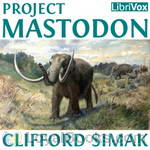 Project Mastodon
Project Mastodon
Clifford Simak deals with the implications of time travel in his own unique way in this story. What if a group of guys did it on their own, without any help from government or industry? On a shoestring,so to speak? Would anyone believe them? What would you do if you could go back 150,000 years to a time when mastodons and saber toothed tigers roamed North America? And what happens when they run out of money? All these questions are explored in the usual humorous, wry Simak way in this story. | |
By: Constantine Panunzio (1884-1964) | |
|---|---|
 Deportation Cases of 1919-1920
Deportation Cases of 1919-1920
"The study here presented embodies the findings of an investigation into the recent [1919-1920] deportations of persons deemed to be unlawfully in the country. . . Its purpose is to call public attention to practices that are inconsistent with the American tradition of justice and fair-play." | |
By: D. B. Casteel (1877-1958) | |
|---|---|
 Behavior of the Honey Bee in Pollen Collecting
Behavior of the Honey Bee in Pollen Collecting
The value of the honey bee in cross pollinating the flowers of fruit trees makes it desirable that exact information be available concerning the actions of the bee when gathering and manipulating the pollen. The results recorded in this manuscript are also of value as studies in the behavior of the bee and will prove interesting and valuable to the bee keeper. The work here recorded was done by Dr. Casteel during the summers of 1911 and 1912. | |
By: Dallas McCord Reynolds (1917-1983) | |
|---|---|
 Status Quo
Status Quo
Larry Woolford is a government agent, tasked with investigating subversive activity. He does everything an ambitious young man should do if he wants to succeed: wear the right clothes, listen to the right music, even drink vodka martinis. Then he stumbles across a conspiracy of Weirds plotting to overthow the entire existing social order. It's a race against time. Can he stop their fiendish plan, and keep America safe for shallow judgements based on status symbols? Status Quo was nominated for the 1962 Hugo Award for short fiction. | |
By: Dan McKenzie | |
|---|---|
 City of Din
City of Din
A treatise on the increasing loudness of modern life, including philosophical and scientific discussion of what noise is, how effects us physically, mentally, and socially in cities, on railways, at home, in workplaces, and on battlefields of war. The book concludes with some strong suggestions for protecting ourselves from noise as well as for lessening noise altogether. - Summary by Amelia Chesley | |
By: David Brewster (1781-1868) | |
|---|---|
 Martyrs of Science, or, the Lives of Galileo, Tycho Brahe, and Kepler
Martyrs of Science, or, the Lives of Galileo, Tycho Brahe, and Kepler
“The martyrs of Science” gives a brief biography of Galileo, Brahe and Kepler. These three men played a pivotal role in the scientific revolution during the early modern period. This book throws light upon their lives, their scientific achievements, adversities which they faced for their work and how they transformed the lives of the future generations forever. It also provides evidence which establishes that the work carried out by them are original irrespective of the claims by other men who tried in vain to rob them of their honor. The author highlights some of their fallacies which hindered their progress. | |
By: David Hilbert (1862-1943) | |
|---|---|
 Mathematical Problems
Mathematical Problems
Lecture delivered before the International Congress of Mathematicians at Paris in 1900 and subsequently published in the Bulletin of the American Mathematical Society Vol. 8 (1902), 479-481. | |
By: David Lindsay (1876-1945) | |
|---|---|
 A Voyage to Arcturus
A Voyage to Arcturus
A Voyage to Arcturus is a novel by Scottish writer David Lindsay, first published in 1920. It combines fantasy, philosophy, and science fiction in an exploration of the nature of good and evil and their relationship with existence. It has been described by critic and philosopher Colin Wilson as the "greatest novel of the twentieth century" and was a central influence on C. S. Lewis's Space Trilogy. | |
By: David Marshall Brooks (1902-1994) | |
|---|---|
 The Necessity of Atheism
The Necessity of Atheism
Plain speaking is necessary in any discussion of religion, for if the freethinker attacks the religious dogmas with hesitation, the orthodox believer assumes that it is with regret that the freethinker would remove the crutch that supports the orthodox. And all religious beliefs are "crutches" hindering the free locomotive efforts of an advancing humanity. There are no problems related to human progress and happiness in this age which any theology can solve, and which the teachings of freethought cannot do better and without the aid of encumbrances. | |
By: David Todd (1855-1939) | |
|---|---|
 Astronomy: The Science of the Heavenly Bodies
Astronomy: The Science of the Heavenly Bodies
The progress of astronomy from age to age has been far from uniform—rather by leaps and bounds: from the earliest epoch when man's planet earth was the center about which the stupendous cosmos wheeled, for whom it was created, and for whose edification it was maintained—down to the modern age whose discoveries have ascertained that even our stellar universe, the vast region of the solar domain, is but one of the thousands of island universes that tenant the inconceivable immensities of space... | |
By: Dhan Gopal Mukerji (1890-1936) | |
|---|---|
 Kari the Elephant
Kari the Elephant
The adventures of an Indian boy and his beloved elephant. Born near Calcutta, Mukerji won the Newbury Medal for children's fiction. | |
By: Donald Keyhoe (1897-1988) | |
|---|---|
 Flying Saucers are Real
Flying Saucers are Real
The Flying Saucers are Real is a book that investigates numerous encounters between USAF fighters, personnel, and other aircraft, and UFOs between 1947 and 1950. Keyhoe contended that the Air Force was actively investigating these cases of close encounter, with a policy of concealing their existence from the public until 1949. He stated that this policy was then replaced by one of cautious, progressive revelation. Keyhoe further stated that Earth had been visited by extraterrestrials for two centuries, with the frequency of these visits increasing sharply after the first atomic weapon test in 1945... | |
By: Donald Wandrei (1908-1987) | |
|---|---|
 Raiders of the Universes
Raiders of the Universes
It was the 34th century and all five of the Federation of Planets around Sol were buzzing with their usual activity when the Raiders appeared. They were indeed Raiders of Universes because they had ravaged many systems before reaching Earth and showed no signs of slowing down in the least. Their weapons were invincible, their greed merciless and their natures completely alien. Indeed 'they' were from another dimension entirely. Eating up entire solar systems and planets, they slowed down just a bit when intelligent life was found on Earth... | |
By: Dorothy Mills | |
|---|---|
 Book of the Ancient Greeks
Book of the Ancient Greeks
An Introduction to the History and Civilization of Greece from the Coming of the Greeks to the Conquest of Corinth by Rome in 146 B.C. The spirit of a nation is expressed and its history is recorded in three ways: in its political history, in its literature and in its art. The aim of this book has been to use such parts of the political history of the Greeks, of their literature and of their art as seem to have been the outward and visible signs of the spirit that inspired them. - Summary from... | |
By: Dr. Albert Philip Sy (1872-?) | |
|---|---|
 Food Values
Food Values
A short pamphlet from WWI, a sequel of sorts to "Food Preparedness." It first describes basic nutrition and things to consider when choosing what foods to eat, then lists various foods and their amount of calories, carbohydrates, fats, proteins, water, and "ash". This was written before much was known about fat soluble vitamins or saturated vs. unsaturated fats. | |
By: Dr. Benjamin Rush (1746-1813) | |
|---|---|
 Inquiry into the Effects of Ardent Spirits upon the Human Body and Mind, with an Account of the Means of Preventing, and of the Remedies for Curing Them
Inquiry into the Effects of Ardent Spirits upon the Human Body and Mind, with an Account of the Means of Preventing, and of the Remedies for Curing Them
Written when the United States extended only to the Mississippi River, by one of the signers of the Declaration of Independence, this short work explores the physical, social, and mental effects of distilled liquors; the classes of people prone to intoxication by them; suggested drinks to use instead of them; and remedies for intoxication and for their habitual use. He takes a medical view of alcoholism, exploring the physical causes rather than blaming moral failure as the cause. Alcoholic drinks that are not distilled are viewed as wholesome drinks, and opium is suggested for pain as being without bad effects or addictive qualities. | |
By: E. A. Wallis Budge (1857-1934) | |
|---|---|
 Book of the Dead
Book of the Dead
The Egyptian Book of the Dead, or the Book of Coming Forth by Day, is an Ancient Egyptian funerary text consisting of spells to protect the soul on its journey to Duat, or Afterlife. | |
By: E. E. Smith (1895-1965) | |
|---|---|
 Spacehounds of IPC
Spacehounds of IPC
When the Inter-Planetary Corporation's (IPC) crack liner “IPV Arcturus” took off on a routine flight to Mars, it turned out to be the beginning of a unexpected and long voyage. There had been too many reports of errors in ship's flight positions from the Check Stations and brilliant physicist Dr. Percival (“Steve”) Stevens is aboard the Arcturus on a fact-finding mission to find out what's really happening, and hopefully save the honor of the brave pilots of the space-liner Arcturus from the desk-jockeys' in the Check Stations implications of imprecision - the nastiest insult you could cast at a ships pilot... | |
 Skylark Three
Skylark Three
This is a sequel to The Skylark of Space. The novel concerns Richard Seaton and his allies who have encounters with aliens while fighting DuQuesne and the Fenachrone.. | |
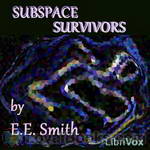 Subspace Survivors
Subspace Survivors
A team of space travelers are caught in a subspace accident which, up to now, no one has ever survived. But some of the survivors of the Procyon are not ordinary travelers. Their psi abilities allow them to see things before they happen. But will it be enough?Smith's story "Subspace Survivors" first appeared in the July 1960 issue of the magazine Astounding. | |
 Galaxy Primes
Galaxy Primes
They were four of the greatest minds in the Universe: Two men, two women, lost in an experimental spaceship billions of parsecs from home. And as they mentally charted the Cosmos to find their way back to earth, their own loves and hates were as startling as the worlds they encountered. | |
By: E. E. “Doc” Smith (1890-1965) | |
|---|---|
 Triplanetary, First in the Lensman Series
Triplanetary, First in the Lensman Series
Triplanetary was first serialized in Amazing Stories in 1934. After the Lensman series became popular, Smith took his Triplanetary story and turned it into the first of the Lensman series, using it as a prequel to give the back story for the protaganists in the Lensmen series. He added 6 new chapters, doubling it in size and it's really a different book from the serialized novel, being published 14 years after the first. It was put into Gutenberg just last year. The novel covers several episodes in an eons-long eugenics project of the super-intelligences of the Arisia... | |
By: E. Sylvia Pankhurst (1882-1960) | |
|---|---|
 Suffragette: The History of the Women's Militant Suffrage Movement
Suffragette: The History of the Women's Militant Suffrage Movement
This history of the Women's Suffrage agitation is written at a time when the question is in the very forefront of British politics. What the immediate future holds for those women who are most actively engaged in fighting for their political freedom no one can foretell, but one thing is certain: complete victory for their cause is not far distant. When the long struggle for the enfranchisement of women is over, those who read the history of the movement will wonder at the blindness that led the Government of the day to obstinately resist so simple and obvious a measure of justice... | |
By: E. W. Seabrook Hull (1923-2007) | |
|---|---|
 Atom and the Ocean
Atom and the Ocean
This is one of the publications in the “Understanding the Atom” Series from the U. S. Atomic Energy Commission. Topics covered include an overview of the ocean, the role of nuclear energy, research project, oceanic instruments, nuclear powered vessels, desalination, and radiation preservation of seafood. - Summary by Larry Wilson | |
By: E.E. Smith (1890-1965) | |
|---|---|
 The Vortex Blaster
The Vortex Blaster
Uncontrolled, terribly violent Atomic Vortices are slowly destroying civilization on every human planet throughout the galaxy. Nothing can contain or stop them despite the lensmen's best efforts until one destroys the home and family of "Storm" Cloud, brilliant atomic physicist. The tragedy triggers actions on his part that pit him one-on-one against the horrible vortices. Introducing "storm" Cloud as THE Vortex Blaster | |
By: Earl W. Phelan (1900-1993) | |
|---|---|
 Radioisotopes in Medicine
Radioisotopes in Medicine
Radioisotopes in Medicine is an educational booklet published in 1966 as part of the Understanding the Atom series by the United States Atomic Energy Commission. Written in clear language for the general public, the booklet covers the diagnostic and therapeutic uses of radioactive isotopes like technetium 99m and iodine 131. | |
By: Ed Clark | |
|---|---|
 Constructive Beekeeping
Constructive Beekeeping
The author explores the effects of condensation and evaporation as they relate to the success of a beehive. The results of various experiments and the author's thoughts are given. | |
By: Edgar Rice Burroughs (1875-1950) | |
|---|---|
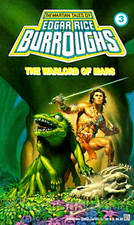 Warlord of Mars
Warlord of Mars
Warlord of Mars by Edgar Rice Burroughs was first published in 1913. It was the third book in an eleven part series known as the Barsoom Chronicles which relate to a sequence of exciting adventure tales set on the fictional planet of Barsoom. In the Barsoom series, Mars, assumed to be older than Earth, is a dying planet. “Barsoom” is the native word for Mars in the Martian language. The stories first appeared in serialized form in various magazines like All-Story, Argosy, Amazing Stories and The Blue Book... | |
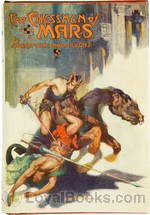 The Chessmen of Mars
The Chessmen of Mars
If you're a sci-fi fan, then you've probably heard of Edgar Rice Burroughs' famous Barsoom series of science fiction fantasy novels. Set in the “dying planet” Mars, the ten books in the series portray an Earthman, John Carter and his astral journey to the Red Planet, his marriage with a native princess and his descendants. The Chessmen of Mars is the fifth book in the Barsoom set, written in 1921 and published in serial form in Argosy magazine over the period of a year. Here, John Carter's daughter Tara meets Prince Gahan of the Gathol kingdom, but takes an instant dislike to the young and fashionable man, feeling that he is just a shallow youth... | |
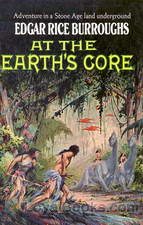 At the Earth's Core
At the Earth's Core
This is the first book in the Pellucidar series. Pellucidar is a fictional Hollow Earth milieu invented by Edgar Rice Burroughs for a series of action adventure stories. The stories initially involve the adventures of mining heir David Innes and his inventor friend Abner Perry after they use an “iron mole” to burrow 500 miles into the earth’s crust. (adapted from Wikipedia) | |
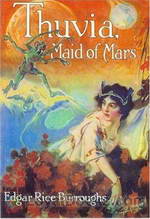 Thuvia, Maid of Mars
Thuvia, Maid of Mars
Published in 1920, Thuvia, Maid of Mars is the fourth book in the Barsoom series and concentrates on Carthoris, the son of infamous John Carter, and Thuvia, the princess of Ptarth, as they find themselves entangled in a complex web of love and strict traditions of Barsoom. A typical Burroughs piece, the installment contains all the required elements of an effective pulp fiction, including a hero, a damsel in distress, unforeseen complications, and a generous supply of action. Welcoming a new... | |
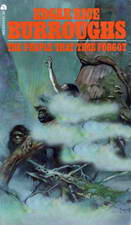 The People that Time Forgot
The People that Time Forgot
The People that Time Forgot is a science fiction novel, the second of Edgar Rice Burroughs’ “Caspak” trilogy. The first novel ended with the hero writing a manuscript of his adventures and casting it out to sea in his thermos bottle. The second novel begins with the finding of the manuscript and the organization of a rescue expedition. | |
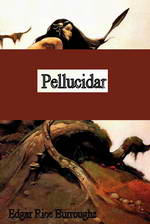 Pellucidar
Pellucidar
Pellucidar is a fictional “Hollow Earth” milieu invented by Edgar Rice Burroughs for a series of action adventure stories. The stories initially involve the adventures of mining heir David Innes and his inventor friend Abner Perry after they use an “iron mole” to burrow 500 miles into the earth’s crust. This is the second book in the series. | |
By: Edmond Halley (1656-1742) | |
|---|---|
 Miscellanea Curiosa, Vol 1
Miscellanea Curiosa, Vol 1
"The Royal Society is a Fellowship of many of the world's most eminent scientists and is the oldest scientific academy in continuous existence." . As scientists have explored the world around them, observed and tried to explain natural phenomena, they have been invited to present papers to the Royal Society. Edmond Halley was an eminent member of the society and gathered together some of the most interesting papers of his day. Today, we may see errors in the logic or calculations, based on current knowledge, but these papers are unedited and as presented at the time and show how scientific knowledge was expanding in the late seventeenth and early eighteenth centuries... | |
By: Edmond Hamilton | |
|---|---|
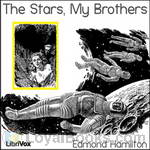 The Stars, My Brothers
The Stars, My Brothers
Edmond Hamilton (1904 – 1977) had a career that began as a regular and frequent contributor to Weird Tales magazine. The first hardcover publication of Science Fiction stories was a Hamilton compilation, and he and E.E. “Doc” Smith are credited with the creation of the Space Opera type of story. He worked for DC Comics authoring many stories for their Superman and Batman characters. Hamilton was also married to fellow author Leigh Brackett. – Published in the May, 1962 issue of Amazing Stories “The Stars, My Brothers” gives us a re-animated astronaut plucked from a century in the past and presented with an alien world where the line between humans and animals is blurred. | |
By: Edmund Christopherson (1903-1974) | |
|---|---|
 Night The Mountain Fell; The Story Of The Montana-Yellowstone Earthquake
Night The Mountain Fell; The Story Of The Montana-Yellowstone Earthquake
A severe earthquake, centered in the vacation area of West Yellowstone, Montana, shook the ground and its inhabitants and visitors on August 17, 1959, at 11.37 pm. A mountainside fell, a lake formed, roads and houses disappeared, people were trapped, people died. The author of this narrative went to the area the day after the quake, took first-hand stories of the catastrophe, researched in the following months, and wrote this account within a year of the shaking. The printed source has many informative photographs. - Summary by David Wales | |
By: Edward Bellamy (1850-1898) | |
|---|---|
 Looking Backward: 2000-1887
Looking Backward: 2000-1887
Looking Backward: 2000-1887 is a utopian novel by Edward Bellamy, first published in 1888. It was the third largest bestseller of its time, after Uncle Tom’s Cabin and Ben-Hur: A Tale of the Christ.The book tells the story of Julian West, a young American who, towards the end of the 19th century, falls into a deep, hypnosis-induced sleep and wakes up more than a century later. He finds himself in the same location (Boston, Massachusetts) but in a totally changed world: It is the year 2000 and, while he was sleeping, the U... | |
By: Edward Elmer Smith (1890-1965) | |
|---|---|
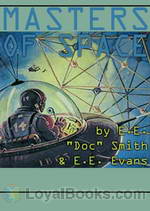 Masters of Space
Masters of Space
The Masters had ruled all space with an unconquerable iron fist. But the Masters were gone. And this new, young race who came now to take their place–could they hope to defeat the ancient Enemy of All? | |
By: Edward Frederick Knight (1852-1925) | |
|---|---|
 Cruise of the Falcon - A Voyage to South America in a 30-Ton Yacht
Cruise of the Falcon - A Voyage to South America in a 30-Ton Yacht
In this fine sailing and exploring yarn, Edward Frederick Knight , sometime English barrister, journalist, sportsman, and amateur seaman, conspires over a fish dinner in Harwich to buy and refit the tiny yacht Falcon, recruit a crew of four , and sail across the Atlantic Ocean to South America. This they do, despite naysayers who advised painting the yacht's name conspicuously on her keel to aid identification when found floating upside down in some foreign sea. The book provides detailed descriptions... | |
By: Edward George Bulwer-Lytton (1803-1873) | |
|---|---|
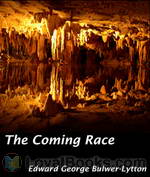 The Coming Race
The Coming Race
Edward George Earle Lytton Bulwer-Lytton, 1st Baron Lytton (1803-1873) was an English novelist, poet, playright, and politician. Lord Lytton was a florid, popular writer of his day, who coined such phrases as “the great unwashed”, “pursuit of the almighty dollar”, “the pen is mightier than the sword”, and the infamous incipit “It was a dark and stormy night.” Despite his popularity in his heyday, today his name is known as a byword for bad writing. San Jose State University holds... | |
By: Edward J. Ruppelt (1923-1960) | |
|---|---|
 The Report on Unidentified Flying Objects
The Report on Unidentified Flying Objects
'Straight from the horse's mouth', as they say. Edward Ruppelt was the first head of the U.S. Air Force's Project Blue Book, the official project initiated to investigate UFO reports beginning in 1952. This report from 1956 takes us inside these initial investigations, separates fact from fiction, and gives insight into who, when, where, and how sightings were reported and researched in open-minded fashion (for which Ruppelt was renowned), rather than in the typical hushed and secretive (and censored) manner most often associated with government and military reports which are released to the public... | |
By: Edward Jesse (1780-1868) | |
|---|---|
 Anecdotes of Dogs
Anecdotes of Dogs
"Histories are more full of examples of the fidelity of dogs than of friends."The character, sensibilities, and intellectual faculties of animals have always been a favourite study, and they are, perhaps, more strongly developed in the dog than in any other quadruped, from the circumstance of his being the constant companion of man. I am aware how much has been written on this subject, but having accumulated many original and interesting anecdotes of this faithful animal, I have attempted to enlarge the general stock of information respecting it... | |
By: Edwin Abbott Abbott (1838-1926) | |
|---|---|
 Flatland: A Romance of Many Dimensions
Flatland: A Romance of Many Dimensions
If you've never heard the term “Mathematical Fiction” before, Edwin Abbott Abbott's 1884 novella, Flatland can certainly enlighten you! Flatland: A Romance of Many Dimensions was published in 1884 and since then, it has been discovered and re-discovered by succeeding generations who have been delighted by its unique view of society and people. The plot opens with a description of the fictional Flatland. The narrator calls himself “Square” and asks readers to “Imagine a vast sheet of paper on which straight Lines, Squares, Triangles, Pentagons, Hexagons and other figures, instead of remaining fixed in their places, move freely about... | |
By: Edwin E. Slosson (1865-1929) | |
|---|---|
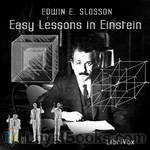 Easy Lessons in Einstein
Easy Lessons in Einstein
Published in 1920, Slosson’s Easy Lessons in Einstein is one of the first popularizations of Einstein’s theory of relativity. This book is meant to convey to the general reader the ideas of relativity in non-mathematical terms, by the use of thought experiements and pop-cultural references of the day. This edition also includes a short article by Einstein on Time, Space and Gravitation. | |
By: Edwin L. Arnold | |
|---|---|
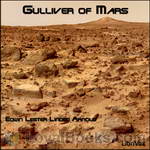 Gulliver of Mars
Gulliver of Mars
This escapist novel, first published in 1905 as Lieutenant Gullivar Jones: His Vacation, follows the exploits of American Navy Lieutenant Gulliver Jones, a bold, if slightly hapless, hero who is magically transported to Mars; where he almost outwits his enemies, almost gets the girl, and almost saves the day. Somewhat of a literary and chronological bridge between H.G. Wells and Edgar Rice Burroughs, Jones’ adventures provide an evocative mix of satire and sword-and-planet adventure. | |
By: Edwin Sharpe Grew (1867-1950) | |
|---|---|
 Romance of Modern Geology
Romance of Modern Geology
From the series, The Library of Romance, this book introduces the reader to the modern geology of the 1909, with topics that include the building and shaping of the earth, the action of weather, rivers, seas and ice on the earth, earthquakes and volcanoes, and, of course, dinosaurs and other extinct animals. - Summary by Ann Boulais | |
By: Elisha Gray (1835-1901) | |
|---|---|
 Nature's Miracles: Familiar Talks on Science
Nature's Miracles: Familiar Talks on Science
Elisha Gray (August 2, 1835 – January 21, 1901) was an American electrical engineer who co-founded the Western Electric Manufacturing Company. Gray is best known for his development of a telephone prototype in 1876 in Highland Park, Illinois and is considered by some writers to be the true inventor of the variable resistance telephone, despite losing out to Alexander Graham Bell for the telephone patent. | |
 Nature's Miracles Volume II: Energy and Vibration
Nature's Miracles Volume II: Energy and Vibration
Elisha Gray was an American electrical engineer who co-founded the Western Electric Manufacturing Company. Gray is best known for his development of a telephone prototype in 1876 in Highland Park, Illinois and is considered by some writers to be the true inventor of the variable resistance telephone, despite losing out to Alexander Graham Bell for the telephone patent.Nature’s Miracles: Familiar Talks on Science, published in 1900, is a discussion of science and technology for the general public. Volume II is subtitled Energy and Vibration: Energy, Sound, Heat, Light, Explosives. | |
By: Eliza Burt Gamble (1841-1920) | |
|---|---|
 Sexes in Science and History
Sexes in Science and History
In this revised second edition of her first book "The evolution of woman" (1894), subtitled "An inquiry into the dogma of woman's inferiority to man", Eliza Burt Gamble uses Darwin's theory of evolution and other scientific information to compare the development of the male and female organisms and describe their differences. Introducing the role of the woman in prehistoric society, we see how that changed through the course of history, from evidence both in less advanced tribes and in civilized historic societies, to the marked progress in the social and economic conditions of women in the time this edition was published (1916). | |
By: Elizabeth Blackwell (1821-1910) | |
|---|---|
 Pioneer Work in Opening the Medical Profession to Women
Pioneer Work in Opening the Medical Profession to Women
A fascinating account of the first woman to receive a medical degree in the United States. She writes of her struggles in being accepted to a medical school . She details her experiences while in the process of obtaining her degree, and her work both with patients and administratively, helping to found medical schools and hospitals for women. Summary by Phyllis Vincelli | |
By: Elizabeth Grinnell (1851-1935) | |
|---|---|
 Our Feathered Friends
Our Feathered Friends
This volume displays the romance of birds in beautiful prose and dialog in simple language for children and adults alike. Written by a mother and son team of naturalists, chapters describe various aspects of the life and habits of birds highlighting specific birds from owls to hummingbirds. From the introduction: “Seek the children, little book: Bid them love the bird's retreat . . . Bid them find their secrets out, How to understand their words.” - Summary by Larry Wilson | |
By: Elizabeth L. Banks (1865-1938) | |
|---|---|
 Campaigns of Curiosity: Journalistic Adventures of an American Girl in London
Campaigns of Curiosity: Journalistic Adventures of an American Girl in London
Elizabeth Banks was an American journalist who, at about age 23, moved to London. While trying to break into English journalism and to keep the wolf from the door, she struck upon the idea of hiring out as a housemaid in some London household and writing about her experiences. Subsequently, she became a street sweeper, flower-seller, and a laundress. On the flip side, she advertised as an heiress and demonstrated how easy it was for a wealthy American to "buy a pedigree" and entry into the higher social circles... | |
By: Ella Rodman Church (1831-) | |
|---|---|
 Among the Trees at Elmridge
Among the Trees at Elmridge
"On that bright spring afternoon when three happy, interested children went off to the woods with their governess to take their first lesson in the study of wild flowers, they saw also some other things which made a fresh series of "Elmridge Talks," and these things were found among the trees of the roadside and forest." | |
By: Ellen Churchill Semple | |
|---|---|
 Influences of Geographic Environment
Influences of Geographic Environment
INFLUENCES OF GEOGRAPHIC ENVIRONMENT ON THE BASIS OF RATZEL'S SYSTEM OF ANTHROPO-GEOGRAPHY BY ELLEN CHURCHILL SEMPLE PREFACE The present book, as originally planned over seven years ago, was to be a simplified paraphrase or restatement of the principles embodied in Friedrich Ratzel's _Anthropo-Geographie_. The German work is difficult reading even for Germans. To most English and American students of geographic environment it is a closed book, a treasure-house bolted and barred. Ratzel himself realized that any English form could not be a literal translation, but must be adapted to the Anglo-Celtic and especially to the Anglo-American mind... | |
By: Ellen Key (1849-1926) | |
|---|---|
 Woman Movement
Woman Movement
Ellen Key's 'The Woman movement' follows the development of the feminist movement striving towards a greater emancipation of women in the public sphere and overcoming the traditional perception of gendered activities. The Swedish feminist and this work combined with many more, served as a base for a lot of the 20th century feminist movements. | |
By: Emanuel Swedenborg (1688-1772) | |
|---|---|
 Soul or Rational Psychology
Soul or Rational Psychology
Swedenborg, Emanuel, 1688-1772, was born in Stockholm, Sweden and died in London, England. He was a voluminous writer of scientific treatises as well as prophetic works such as Archana Caelestia and The Divine Providence. He said he had encountered supranational agencies and communicated with angels. This is a recording of the 1849 translation of his 1743 book The Soul or Rational Psychology Latin. He took his cue from Aristotle's De Anima. A few quotes It has been shown above that the harmonies... | |
By: Emma Goldman (1869-1940) | |
|---|---|
 Anarchism and Other Essays
Anarchism and Other Essays
Chicago, May 4, 1886. In the Haymarket region of the city, a peaceful Labor Day demonstration suddenly turns into a riot. The police intervene to maintain peace, but they soon use violence to quell the mob and a bomb is thrown, resulting in death and injuries to scores of people. In the widely publicized trial that followed, eight anarchists were condemned to death or life imprisonment, convicted of conspiracy, though none of them had actually thrown the bomb. A young Russian immigrant, Emma Goldman, had arrived just the previous year in the United States... | |
 Deportation: Its Meaning and Menace. Last Message to the People of America
Deportation: Its Meaning and Menace. Last Message to the People of America
A pamphlet written by Alexander Berkman and Emma Goldman shortly before their deportation from the US in 1919. | |
By: Ernest Thompson Seton (1860-1946) | |
|---|---|
 Wild Animals I Have Known
Wild Animals I Have Known
Wild Animals I Have Known is an 1898 book by naturalist and author Ernest Thompson Seton. The first entry in a new genre of realistic wild-animal fiction, Seton's first collection of short stories quickly became one of the most popular books of its day. "Lobo the King of Currumpaw", the first story in the collection, was based upon Seton's experience hunting wolves in the southwestern United States. It became a classic, setting the tone for his future works that would similarly depict animals—especially predators who were often demonized in literature—as compassionate, individualistic beings. | |
By: Eva March Tappan (1854-1930) | |
|---|---|
 World’s Story Volume XIII: The United States
World’s Story Volume XIII: The United States
This is the thirteenth volume of the 15-volume series of The World’s Story: a history of the World in story, song and art, edited by Eva March Tappan. Each book is a compilation of selections from prose literature, poetry and pictures and offers a comprehensive presentation of the world's history, art and culture, from the early times till the beginning of the 20th century. Part XIII is the second volume of the history of the United States, exploring topics from the Civil War, the settlement on the West Coast, and new scientific discoveries from the 19th and early 20th centuries. - Summary by Sonia | |
By: F. J. Foakes-Jackson (1855-1941) | |
|---|---|
 Social Life in England 1750-1850
Social Life in England 1750-1850
In 1916, the Cambridge historian, F.J. Foakes-Jackson braved the wartime Atlantic to deliver the Lowell Lectures in Boston. In these wide-ranging and engaging talks, the author describes British life between 1750-1850. There are John Wesley's horseback peregrinations over thousands of miles of English countryside. Next, Foakes-Jackson introduces the mordant rural poet, George Crabbe, who began life as a surgeon apothecary and ended up as a parish rector who made house calls. He gives us a female convict, assorted Cambridge University dons, Regency fops and rakes, and Victorian slices of life from Dickens and Thackeray... | |
By: Fabian Franklin | |
|---|---|
 What Prohibition Has Done to America
What Prohibition Has Done to America
In What Prohibition Has Done to America, Fabian Franklin presents a concise but forceful argument against the Eighteenth Amendment of the U.S. Constitution. Beginning in 1920, this Amendment prohibited the sale and manufacture of alcoholic beverages in the United States, until it was repealed in 1933. Franklin contends that the Amendment “is not only a crime against the Constitution of the United States, and not only a crime against the whole spirit of our Federal system, but a crime against the first principles of rational government... | |
By: Fannie Hardy Eckstorm (1865-1946) | |
|---|---|
 The Woodpeckers
The Woodpeckers
The Woodpeckers is a wonderful introduction to the world of bird study for the young naturalist, covering such topics as how he finds food, courting, how he builds his nest, the interesting ways he uses his different body parts as tools, among other topics discussed in the book. If you wish to investigate further, the book has a few diagrams and an Appendix that contains more technical information such as detailed descriptions of the different species of North American woodpeckers which were not read as part of this audiobook. | |
By: Fleming Mant Sandwith (1853-1918) | |
|---|---|
 Sleeping Sickness
Sleeping Sickness
In the twenty-first century sleeping sickness is still a life-threatening disease of adults and children and a hazard to tourists in East African game parks.The protozoan parasite is transmitted by the tsetse fly, a buzzing insect with reddish eyes and a large biting proboscis. In 1912, when this short monograph was written, physicians of the British Empire understood that trans-continental expeditions manned by infected African porters, had set off an epidemic of sleeping sickness that had claimed half a million lives... | |
By: Florence Nightingale (1820-1910) | |
|---|---|
 Notes on Nursing
Notes on Nursing
Notes on Nursing was published in 1859 and is a fascinating view into the theories underpinning the early development of modern nursing and public health reform by "the Lady with the Lamp", Florence Nightingale. Emphasising common sense and thought for the patient's care in many more ways than just administering physician-prescribed medicines, this is still a very relevant book for those interested in health or caring for the sick and infirm today.Summary by Cori Samuel. | |